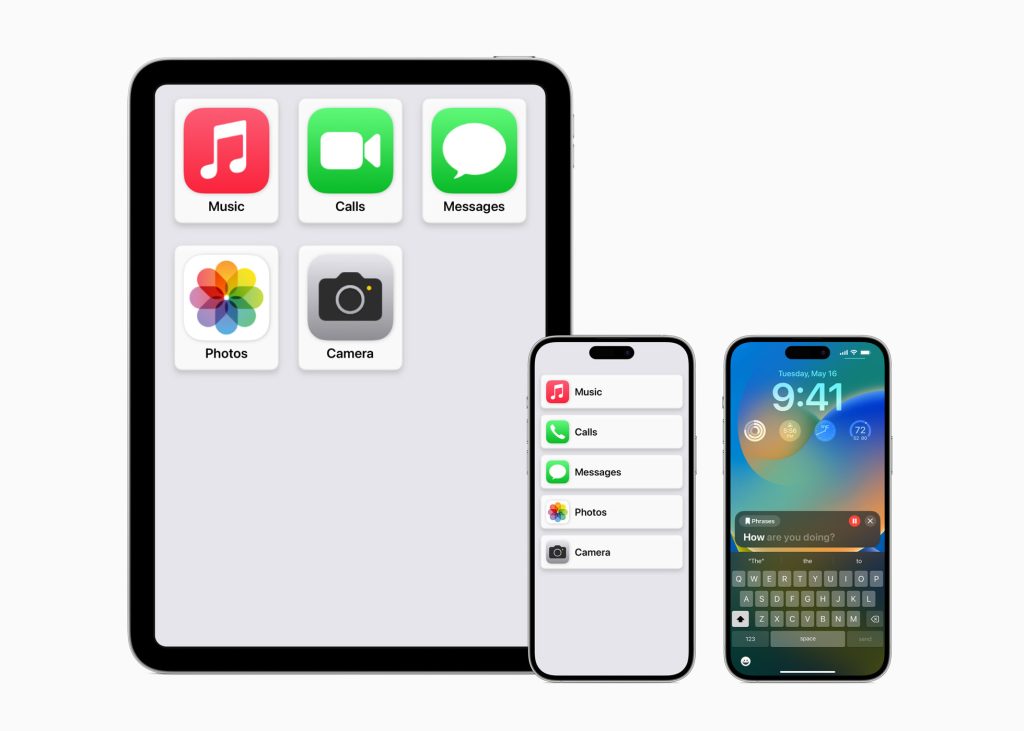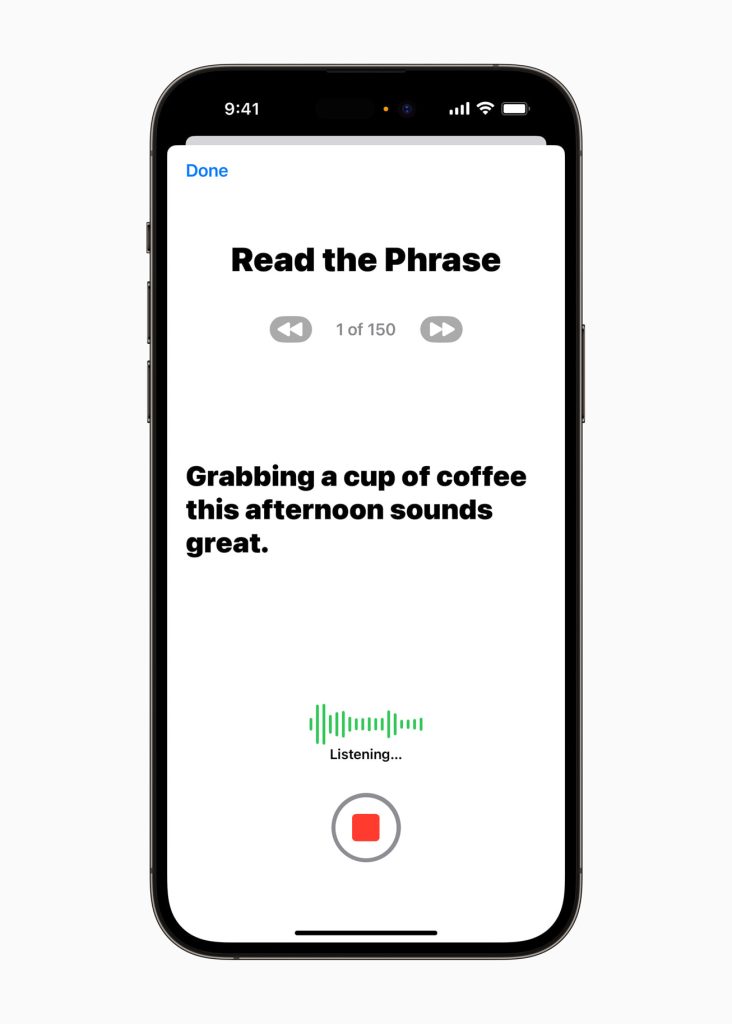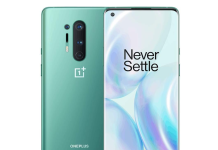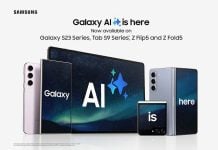In a remarkable demonstration of its commitment to inclusivity and accessibility, Apple has provided a sneak peek into its upcoming software features designed to empower individuals with disabilities. These cutting-edge updates encompass cognitive, vision, hearing, and mobility accessibility, as well as innovative tools for those who are nonspeaking or at risk of losing their ability to speak. Leveraging advancements in hardware and software, Apple ensures user privacy by utilizing on-device machine learning. These groundbreaking features are set to revolutionize the way people with disabilities interact with technology, embodying Apple’s longstanding philosophy of creating products that cater to everyone’s needs.
Personal Voice will let users synthesize a voice that sounds exactly like them in 15 Minutes
Apple’s relentless pursuit of inclusivity is exemplified by its close collaboration with community groups representing a diverse range of users with disabilities. The forthcoming updates, slated for release later this year, will introduce transformative accessibility options. Users with cognitive disabilities will benefit from Assistive Access, which simplifies apps and experiences to reduce cognitive load. By streamlining activities such as connecting with loved ones, capturing and enjoying photos, and listening to music, Assistive Access empowers individuals with cognitive disabilities to use their iPhones and iPads with greater ease and independence.

Moreover, Apple recognizes the challenges faced by nonspeaking individuals and those at risk of losing their ability to speak. To address this, Live Speech enables users to type their messages, which are then spoken aloud during phone calls, FaceTime conversations, and even in-person discussions. This breakthrough feature, available on iPhone, iPad, and Mac, accommodates millions of people worldwide who are unable to speak or have experienced speech loss over time.
Another remarkable innovation is Personal Voice, a secure and user-friendly solution for individuals at risk of losing their ability to speak, such as those with ALS or similar conditions. By recording 15 minutes of audio through a series of text prompts, users can create a synthesized voice that sounds like their own. Apple’s on-device machine learning technology ensures the privacy and security of users’ information. Personal Voice seamlessly integrates with Live Speech, allowing users to communicate with their unique synthesized voice when connecting with family and friends.
For users with vision disabilities, Apple introduces Point and Speak in the Magnifier app. Leveraging the camera, LiDAR Scanner, and on-device machine learning, this feature identifies and reads text labels aloud on physical objects like household appliances. Point and Speak empowers individuals with vision impairments to interact with their surroundings confidently, enabling greater independence and convenience.

In addition to these key updates, Apple introduces several other accessibility features to enhance the user experience for individuals with disabilities. Deaf or hard-of-hearing users can directly pair Made for iPhone hearing devices with their Mac and customize them for optimal comfort. Voice Control now includes phonetic suggestions for text editing, aiding users who rely on voice input. Switch Control allows users with physical and motor disabilities to transform any switch into a virtual game controller, providing an inclusive gaming experience. Apple has also improved Text Size adjustment across various Mac apps for users with low vision.
Furthermore, Apple addresses the needs of users who are sensitive to rapid animations by automatically pausing images with moving elements, such as GIFs, in Messages and Safari. VoiceOver users will enjoy more natural and expressive Siri voices, even at high rates of speech feedback, with the ability to customize Siri’s speaking rate.
Tim Cook, Apple’s CEO, emphasizes the company’s commitment to creating technology for all, stating, “At Apple, we’ve always believed that the best technology is technology built for everyone.” Sarah Herrlinger, Apple’s senior director of Global Accessibility Policy and Initiatives, highlights the invaluable contributions of the disability community in shaping these features, stating, “These groundbreaking features were designed with feedback from members of disability communities every step of the way, to support a diverse set of users and help people connect in new ways.”
Apple’s unwavering dedication to accessibility propels technology forward, fostering a world where individuals with disabilities can thrive and reach their full potential. With these innovative features on the horizon, Apple continues to lead the charge in creating a more inclusive digital landscape.
RELATED:
- Apple Is Hoarding TSMC’s 3nm Chips, and It Could Mean Trouble for Its Competitors
- Apple plans to simplify the ‘Hey Siri’ command to just ‘Siri’
- Best iPhone 13 Mini Alternatives in 2023
(Source)







